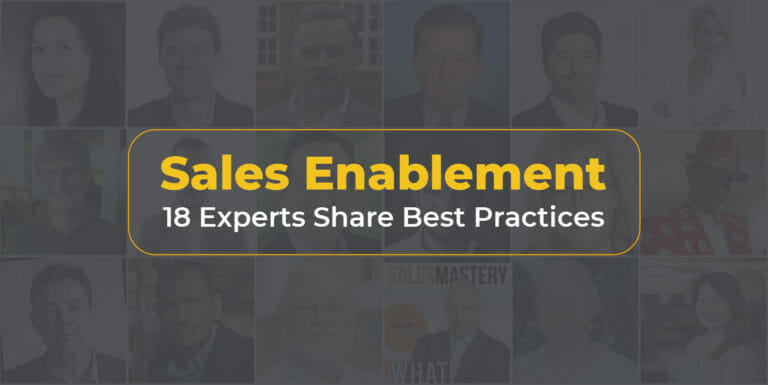The B2B landscape has changed...a lot.
The traditional sales process used to look something like this:
- Marketing would hand leads over to the sales team
- The sales team would try to close the deal
The two departments operated in silos. And, while this simplistic “us vs them” mentality used to work, it doesn’t anymore.
Today, there are an average of 5.4 stakeholders involved in the purchase process. Consumers are more educated, and sales cycles longer.
The growing complexity of the B2B sales environment has blurred the lines between sales and marketing. It has become harder to ensure reps are having the right types of conversations with prospects, while being equipped with the right tools and content to drive deals through each stage of the pipeline.
The stats reflect this:
- Content: Only 35% of salespeople think marketing knows what content they need
- Communication: ⅓ of marketing and sales teams don’t talk regularly
- Accessibility: 88% of sales professionals are unable to utilize critical sales material on their smartphones
The disconnect is evident. But, the opportunity is clear. Organizations implementing sales enablement best practices see big bottom line results, such as:
- 99% overall team attainment of sales quota
- 32% higher team sales quota attainment
- 4% year over year growth in average deal size
But, with so many moving pieces – content, communication, tools, processes – where do you start?
To help surface the answer, we reached out to 18 experts from leading sales organizations and training programs such as Sandler, and asked the following question:
List your top 3 sales enablement best practices for 2019?
While we recommend looking through each of the expert responses as they have unique takeaways, we compiled the five most popular best practices below.
Top 5 Sales Enablement Best Practices (Based on Expert Response)
We read through all the responses and compiled a shortlist of the top 5 sales enablement best practices to apply in your organization. For more information on each best practice, please read through the expert responses below this section.
#1. “Institutionalize” high-performer activities
Identify the best practices of your top sellers and “institutionalize” them for the rest of the team to leverage at relevant points in the sales cycle.
#2. Give reps quick access to content
According to the American Marketing Association, 90% of content goes unused by sales teams. The leading cause: sales reps simply cannot find it.
Experts recommend adopting a sales enablement software that is:
- Flexible: recommends content based on performance and different sales event triggers informed by your marketing automation platform. This keeps sales conversations aligned with the different stages in the buyer journey.
- Organized: acts as an easy-to-use repository for all content and sales tools.
- Integrated: connects with other tools to automate and streamline the sales process.
#3. Provide continual training
According to research, 87% of new skills are lost within a month of sales training.
Successful sales organizations provide ongoing training and communication across their content, tools and workflows so that reps know exactly what will be most effective throughout the entire sales cycle.
#4. Align content with the buyer journey
95% of buyers buy from someone who gave them content at each stage of the buying process.
Align a) your selling processes and b) content strategy to the customer’s conversion path in order to drive meaningful customer engagement.
#5. Streamline with technology
This might seem like an obvious one, but a study by CSO Insights found that 60% of sales organizations report a longer sales cycle due to a lack of proper tools.
The right technology stack can fuel sales efforts because they help with forecasting, goal-setting, training and more. In order to maintain alignment, try to leverage the same technology as the marketing team, where possible.
18 Experts Reveal Top Sales Enablement Best Practices
Ok:
That’s a quick recap of the most popular sales enablement best practices. Now its time to dive deeper and see how the experts are applying the different best practices to achieve success in their organizations.

Gavin Harris
- We have created a value model using DecisionLink that allows us to easily align the value of Apptega to our customer’s unique requirements. Using the platform, we are able to quickly deliver high quality documents that help our champions internally position the financial benefits of moving forward with Apptega.
- We leverage hyper-personalized and professional quality video outreach for prospecting to new customers and prospects. Leveraging the Cyranoapp.io platform, we can easily engage our executives to participate in packaged outreach efforts to their peers in prospective companies.
- We continually try to provide value, sharing blog posts and other relevant pieces of content that provide value at every touchpoint throughout the sales cycle.

Colleen Francis
- Use your best to coach the rest. Identify the best practices of top sellers and “institutionalize” them for the rest of the team to leverage.
- Create small bites of “just in time” skill development tailored specifically to active deals in the pipeline. Serve these up to sellers in your CRM based on sales stage, deal size, competition and product set.
- Following every win, get the seller record a quick video documenting the top three things they did to successfully close the deal. Use these videos for real time training served up in your CRM based on when the training will be most effective. For example, trigger the questioning skills training video once the deal reaches the qualify stage.
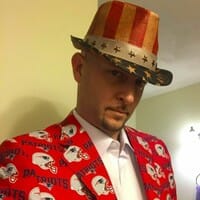
John Barrows
- Find a way to tie content to revenue. Determine which content types reps are watching/learning that drives the best results, and share them with everyone else.
- Interview your best reps and ask them to walk you through their most recent and best sale, starting with qualification and going through each stage of the sales process. Cut up the content, tag it by stage, and put it into a repository where reps can go view what good/great looks like.
- Invest in a tool that provides “just in time” learning for reps when they need it, instead of training them in-person once and expecting them to remember what to do months later.

Nate Bishop
My top 3 sales enablement best practices include:
- Training/coaching,
- Embracing technology,
- Industry knowledge.
Everything is always progressing and we need adapt to the ever changing environment. To keep our team at the forefront of industry knowledge we leverage a variety of training and coaching solutions. It is important that we have a finger on the industry pulse, and upcoming trends.
Through weekly coaching we equip our team with a tool set to deliver deep industry insights to our customers and future customers. We’re continuously evaluating new technologies to improve our sales processes and operations to enable our team to focus on having meaningful conversations.

Steve Richard
- First define your call types (cold call, lead follow up call, discovery call, demo, closing call, etc.). Then define the 7-10 key ‘behaviors’ that your sales reps should exhibit by call type.
- Create coaching plans to follow that the reps are moving toward mastery on those key behaviors. Coaching plans need to be a series of coaching interventions over a period of time in order to beat the ‘forgetting curve.’ Google “forgetting curve” if you don’t know what that it. You need to move people from unconsciously incompetent to consciously competent.
- Run a call of the month contest to make learning fun. Celebrate catching examples of what great calls sound like in the wild. Build your library of best calls to ramp the next generation of reps in half the time.

Bob Apollo
- Sales enablement is a team effort. You need to actively involve your top sales performers in developing the program. Learn what it is that makes them successful and work out how to equip and enable their colleagues to emulate their success.
- Package your sales enablement materials into easy-to-find, easy-to-consume, bite-sized chunks that are accessible anywhere. Proactively serve up the materials that are most likely to be useful to the sales person in their current situation.
- Carefully analyse what is and isn’t used, and look for correlations between the use of specific sales enablement tools and subsequent sales success. Do more of what works, and stop doing what doesn’t.

Tamara Schenk
- Formalize your sales enablement approach: Align your enablement strategy to the organization’s strategic initiatives. Create a sales enablement charter (business plan) and achieve up to 2-digit win rate improvements.
- Focus on the customer: Align a) your selling processes and b) your enablement services to the customer’s path to drive effective customer engagement. Those who do, see better win rates.
- Sales coaching remains a critical gap when it comes to adoption and reinforcement. Mature enablement functions develop sales managers as top sales coaches to improve win rates.

Daniel Disney
- Utilize all the tools your customers are using. This could include the phone, social media, email, video, networking, post etc. If your customers are using it then you have an opportunity to leverage it to reach them.
- Don’t fear technology, use it! A lot of salespeople are scared AI will take away their jobs, but the best salespeople are learning how to use it to enhance their jobs. Look at what tools are available, try them, practice and master them.
- Start learning how to use video. Video is a huge part of the content world right now and is a fast growing platform for sales conversations. It’s also difficult to get comfortable with so now is the time to start practicing and getting past those initial challenges.

Craig Klein
- Organize leads and prospects by source & disposition/outcome.
- Ensure all leads (even the cold/dead ones) are getting automated emails from you regularly.
- Call leads that engage with your emails quickly (within 4 hours).

Chad Burmeister
- Add more virtual BDRs – Until your quota carrying reps are completely booked up, add more virtual BDRs!
- Remove low value work – Every quarter did into what your SDRs, BDRs, and AEs are doing. Then optimize their daily work so that they focus less on low value work, and more on higher value work (it’s good for them, it’s good for your company).
- Look at Saleshood – Elay Cohen and their team is amazing. Great solution that will change how you train your sales team!
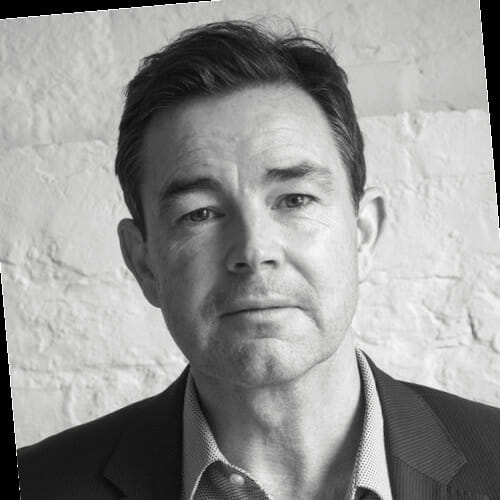
Matt Sykes
- Shift from Managing Time to Measuring it. Effective Sales Enablers are ruthless with their time, they place real value on it, they never give it away for free and only exchange it for something in return.Tip: Divide your ‘To Do’ list up into ‘Unpaid Admin’ tasks and ‘Paid Revenue’ tasks and spend a minimum of 70% of your day on activities which you can directly or indirectly assign an invoice to.
- Develop Your Personal Brand. You are who Google says you are and in today’s social market place, it’s possible to position yourself as the ‘go-to’ sales person in your industry.Tip: Sharpen up your LinkedIn profile and always produce and publish content that’s helpful and of interest to your target market. Providing consistent, valuable information creates a ‘known, liked and trusted’ status.
- Invest in Your Personal Development. The world of Sales is ever-changing and Ultra High Performers don’t wait for their employer to send them on a training course, they take responsibility for their own success.Tip: Listening to one of the many sales podcasts available on your daily commute will keep you up to date on the latest trends and on what’s new in the world of Sales Training.

Mike Kunkle
Let me start by saying that the next best move for any given sales enablement function is highly contextual, based on how they and their sales force are operating today, and where they both want to be (what they want to achieve) over the next quarter or six months. With that disclaimed, here are the practices I’m hoping we see more of in 2019.
1. Shift to a buyer-oriented selling system
I believe one of the best possible practices is to foster a buyer-orientation across the business. A buyer-orientation means changing the mindset, language and behaviors of the leadership team and employees to an outside-in, other-focused, buyer-centric orientation.This orientation changes language, such as shifting from “quota crushers” to “customer problem solvers,” or from “overcoming objections” to “resolving buyer concerns,” and more. It means understanding your buyer personas and their COIN-OP (Challenges, Opportunities, Impacts, Needs, Objectives, and Priorities) and shifting your prospecting approaches from product-centric to problem/solution centric.
In opportunity management, it means a focus on meeting each decision maker’s buying process exit criteria, or things that each buyer needs to see, hear, feel, understand and believe in each stage of their buyers’ journey, to feel comfortable moving forward to the next stage with you. To learn more, I have a (free) recorded webinar on Sales & Marketing Management Magazine’s SMMConnect channel.
2. Get a sales enablement charter in place
Have you seen the number of sales enablement definitions in the market? Every sales analyst has one, the Sales Enablement Society has one, the Association for Talent Development’s Sales Enablement Community of Practice has one, and I think your grandmother might have one at this point.
I’m hoping we see more consensus this year about enablement being not just marketing-related or readiness and training related, or technology-related, but that it continues to evolve to a cross-functional discipline including marketing/messaging/content, training/readiness/ongoing development, and technology and tools, at a minimum, with possibly an expansion toward sales selection.
I recommend that you review these various current definitions and get a solid understanding of all aspects of sales enablement, and then develop a charter that clearly delineates what sales enablement aspects your function will address, who you will partner with cross-functionally, the outcomes you will support, and how you will work together to achieve them.
As the old saying goes, “you can’t hit a target you don’t see.” A charter fosters alignment and sets clear expectations, ensuring clarity and focus and increasing your chance of success.
3. Evolve toward performance consulting and systems thinking
Once you have the building block of sales enablement in place (see this SlideShare for the building blocks) you can begin to evolve to a consulting practice that identifies and solves problems to improve sales performance. I believe this is the highest and best use of sales enablement and is where I believe and hope the profession is heading.
Performance consulting is a systematic and holistic approach to improve workplace performance and achieve business goals.
Performance consulting:
- Is grounded in analytics, diagnostics, and root cause analysis
- Considers of a broad array of organizational and individual factors that influence human performance
- Includes selection, design, and development of the most appropriate solution to solve the identified performance problem
- Implements initiatives using proven-effective practices for the selected intervention and change practices including communication, follow-through, measurement, analysis, evaluation, and adjustment to ensure results are achieved.I believe this is a natural evolution for sales enablement and that we will see the more advanced in the profession moving toward performance consulting and holistic systems thinking in 2019.
4. [Bonus] Create more effective learning systems
I’m going to offer a bonus fourth practice. I see more organizations trying to train more effectively and get a return on their training investment, and I believe this trend will continue in 2019.I believe we’ll see more organizations favoring bite-sized courses (microlearning that targets one or two key learning objectives at a time, but often strung together into a larger curriculum, as needed).
I believe video will continue to rise in popularity, as well, delivered in these online courses, with reinforcement, crowdsourced best practice sharing, and the use of job aids/performance support and workflow performance support.
Finally, I believe we’ll see continued growing focus on enabling managers to diagnose performance issues to target their time with reps, and coach reps to mastery, whether through virtual/video coaching, team coaching, or one-one-one field coaching. This will include not just coaching in general, but also enabling, empowering and engaging managers in sales onboarding and other ongoing training, as part of the learning system, to coach their reps to mastery with any key skills and competencies that are taught.

Brian Sullivan
To share three 2019 best practices, I’ll start with the definition of the term – “procedures shown by experience to produce optimal results”.
First, meet with each new major account at the start of the business relationship to identify the account’s five most important success factors. These become the substance for client satisfaction, not boilerplate factors your organization uses to survey all accounts.
Second, convert your major account “quarterly business reviews” to “quarterly value reviews” focused on the value you’ve delivered in the previous quarter and the value you are expected to deliver in the upcoming time frame. This totally different perspective, while focused completely on client value, also breeds new business opportunities.
Third, understand that account retention is not a noun. It’s a verb. It’s not what you get. It’s what you do. Honestly assess your organization’s performance regarding the reasons that major accounts stay or go – their critical retention factors. But beyond simply assessing your performance, build accountable action items in each area to improve the relationships and actively increase account retention.So, three best practices to help, by definition, produce optimal 2019 results.
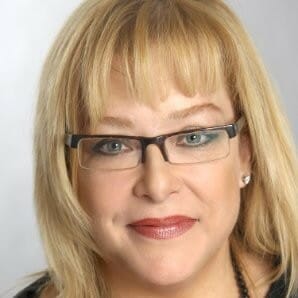
Irene Becker
Sales enablement becomes very important as an organization grows past a sales team of 50 representatives. Smaller teams should, however, have a system in place that creates ownership and accountability for sales and revenue growth. Each sales representative, each marketing collateral or initiative is critical to the customer experience, and the customer experience is the hot button for sales success.
- Make the customer experience a vital part of your ecosystem.The customer experience is a vital part of sales the sales journey. Now, more than ever before the conversations/interactions/touchpoints (face to face or virtual) you have with prospects and customers need to be delivered in the right way, at the right time and include using the right technology as a lever for sales enablement.Sales and marketing teams must work together to provide the right incentives, channels and solutions that develop a strong customer management ecosystem that can be monitored; an ecosystem that will also identify any gaps in the customer experience that need to be addressed and how they will be addressed.
- Coach and train with an emotionally intelligent edge.Develop sticky coaching and training that helps people upskill, improve and also retain what they have learned. Xerox notes that 87% of sales training content is forgotten within one month of the training, we need to develop coaching and training programs that are tools, are aligned for maximum engagement and results.Emotional intelligence, the ability to understand your emotions, manage your emotions and understand the emotions of others is critical to every aspect of the customer journey and sales cycle. Giving your teams training and coaching is emotionally intelligent is critical to sales results and to preparing your people to be the best they can be under stress and also when dealing with different peoples and situations.
- Leverage marketing content and technology.It is important to use marketing content in whitepapers, videos, blogs and all social/digital media to support every stage of the sales cycle. Develop systems that create transparency and report between the marketing and sales department so that new materials can be created with the input of those who are at the front lineThere are many excellent digital sales tools and apps. Choosing the right technology and be a big help in goal-setting, training and more. The need to map the customer journey and to deliver the right message in the right format and at the right time is critical and technology can be a very important tool/resource.

Quyen Chang
As an enablement professional, it is important to remember the following:
- Focus on sales playbook. Content and assets for everyone to be successful.
– Make sure to have feedback from product, marketing, sales contributors
– Confirm that the playbook outlines the sales process and content to help throughout each sales stage - Focus on productive technology. For those in the field to do their job: Salesforce, Saleshood, Outreach, Zoom.Focus on the people. How often are you working on continued enablement programs for managers, individual contributors and the collaboration with pre and post sales teams.
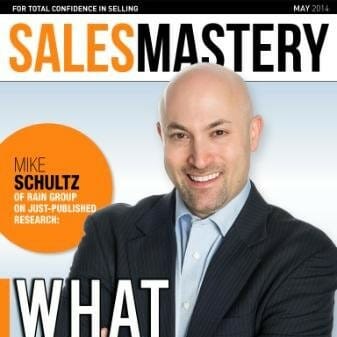
Mike Schultz
- First, never stop training. Sales training is about changing behavior. This can’t be done in a 2- or 3-day training event and isn’t about one program or another. Sales enablement leaders need to provide ongoing training across a variety of sales skills in order to build a top performing sales team.
- Second, they need to provide sales coaching. An effective coach can be the most significant factor in a seller’s success. They motivate sellers, help them build goal and action plans, advise sellers to win deals, and hold sellers accountable. Unfortunately, too many sales coaches either don’t do these things or they don’t do them well and sales performance suffers.
- Lastly, building off of sales coaching, sales enablement should help sellers become extremely productive. Forty-three percent of sellers at Top Performing Sales Organizations have the skills to manage their time and day effectively, but only 26 percent of The Rest do. Running Extreme Productivity training and Challenges is a major priority for RAIN Group clients around the globe in 2019.

Michael D. Decker
As a B2B Marketer and Sales pro looking to deliver road tested SQL’s, I employ valuable and consistent content marketing in the form of a weekly blog that simultaneously raises existing prospect awareness and new prospect accessibility on Search.The fun then begins in discerning client perceived “needs” from Vendor provided “solutions” that truly grasp and differentiate.
A great sales team delivers unexpected solutions that go far beyond expectations. This is what’s necessary today as digital solutions evolve at record breaking pace.
A great sales person leverages the advantages of seeing the forest from the trees.
- See your Clients real competition.
- Understand the gap.
- Leverage your product and services to fill it with a tangible and custom solution — seeing is believing.
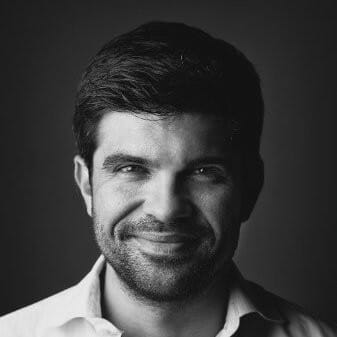
Germain Brion
- We are scaling heavily in 2019. Our biggest enablement pain is to streamline onboarding as we 3x team size. This means we hired someone to “own” onboarding and the LMS roll-out.
- The second best practice is to “trust the team,” they can be experts in very niche areas of their trade; by giving them space to share learnings and shine, we encourage a culture of growth and learning and source great ideas.
- Finally, we are now doing regular marketing check-ins to ensure the Sales Team has relevant collateral throughout the year.
What Sales Enablement Best Practices Will You Implement in 2019?
There you have it – 18 experts shared the top sales enablement practices to implement in 2019.
Which ones are going to use? Any others you’d add?
Let us know in the comments below.

